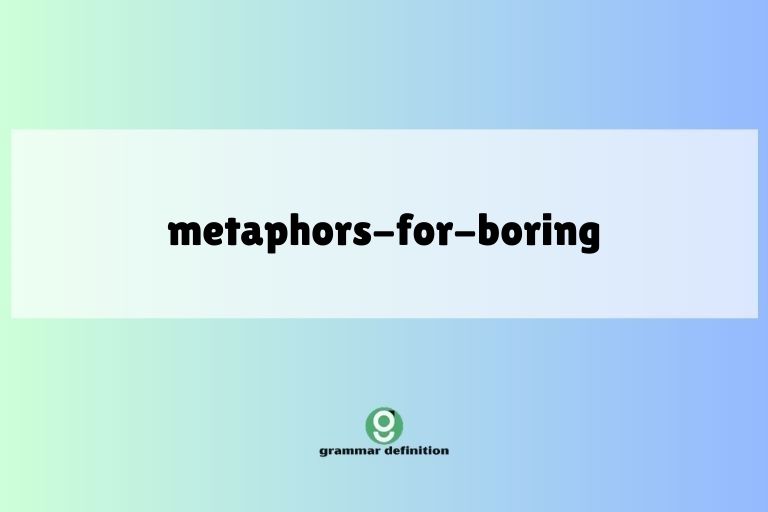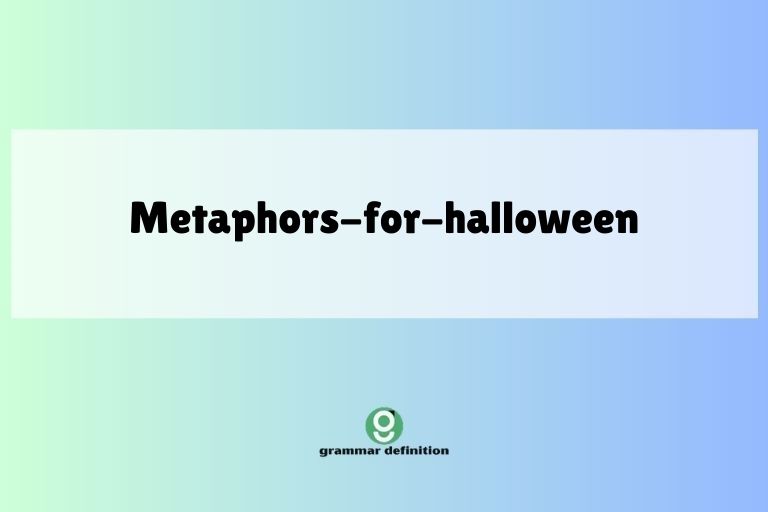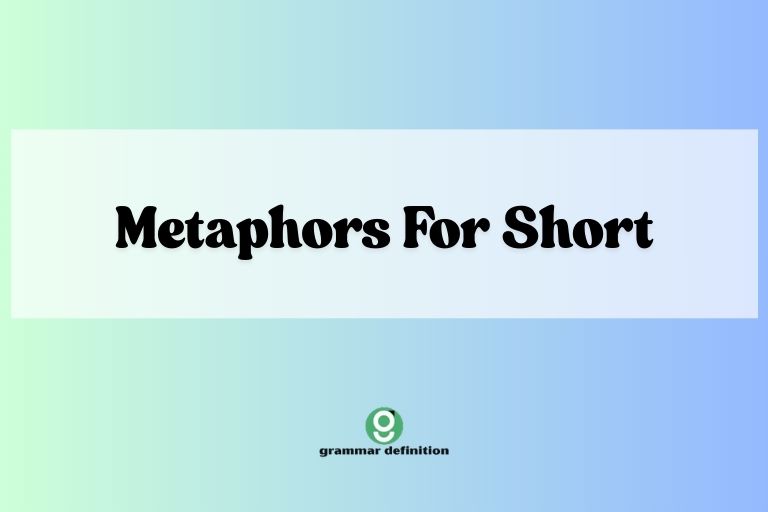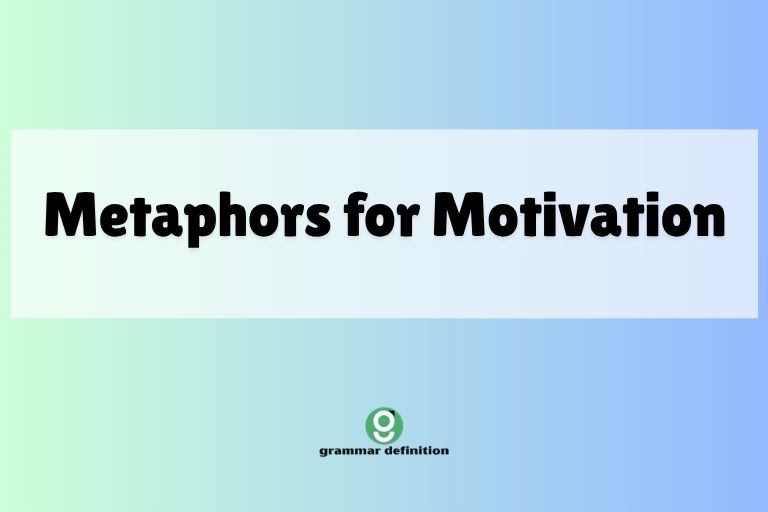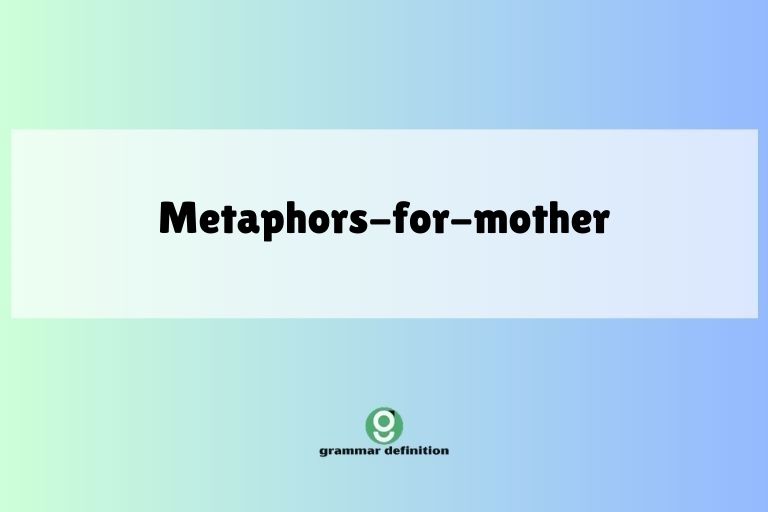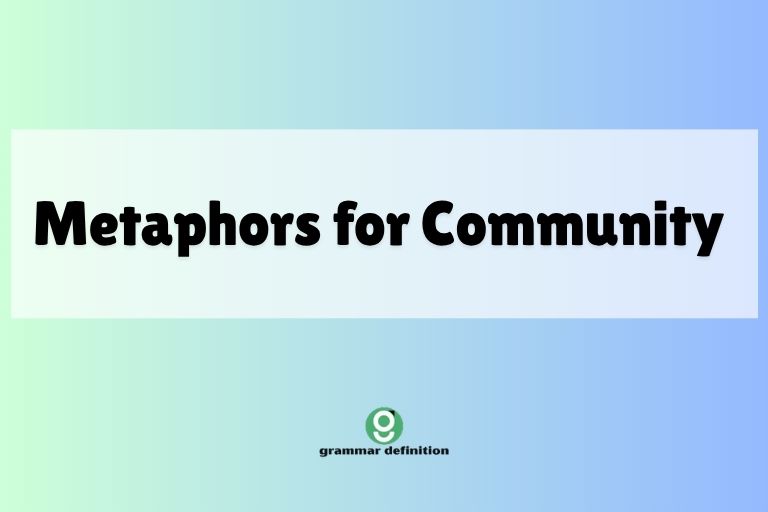Eyes as Windows: Mastering Metaphors for Describing Eyes
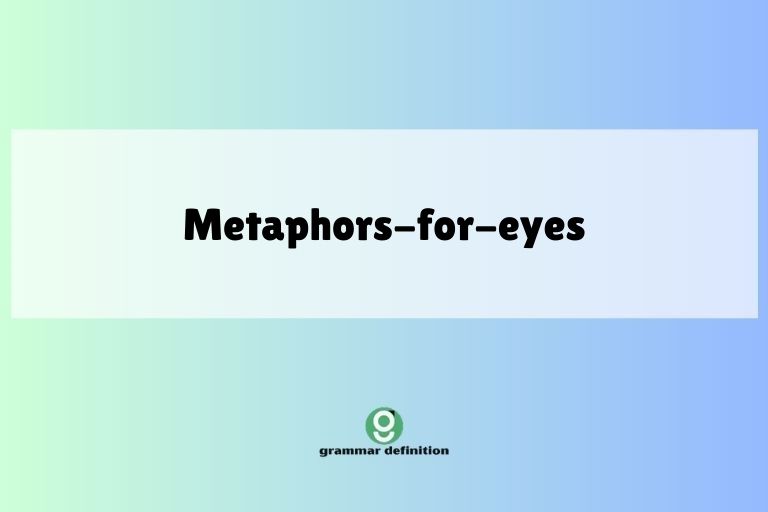
The eyes, often called the windows to the soul, hold a profound significance in language and literature. Mastering the art of using metaphors to describe eyes can significantly enhance your writing and communication skills.
This article delves into the fascinating world of eye metaphors, exploring their definition, structural components, various types, usage rules, common mistakes, and advanced applications. Whether you’re a student, writer, or language enthusiast, this comprehensive guide will equip you with the knowledge and tools to effectively use metaphors to paint vivid and expressive portraits of the human gaze.
Understanding and skillfully employing eye metaphors allows for richer, more evocative descriptions. This skill is essential for creative writing, persuasive communication, and even everyday conversation.
By the end of this article, you will not only understand the grammatical principles behind eye metaphors but also be able to use them confidently and creatively.
Table of Contents
- Introduction
- Definition of Metaphors for Eyes
- Structural Breakdown of Eye Metaphors
- Types of Eye Metaphors
- Examples of Eye Metaphors
- Usage Rules for Eye Metaphors
- Common Mistakes with Eye Metaphors
- Practice Exercises
- Advanced Topics in Eye Metaphors
- Frequently Asked Questions
- Conclusion
Definition of Metaphors for Eyes
A metaphor is a figure of speech that directly compares two unrelated things, asserting that they are the same for rhetorical effect. In the context of eyes, a metaphor uses an object, concept, or characteristic to describe the eyes in a more vivid and imaginative way.
Metaphors for eyes go beyond literal descriptions, evoking emotions, personality traits, or inner states.
These metaphors function by transferring qualities from one domain (the metaphorical vehicle) to another (the eyes themselves). This allows writers and speakers to convey complex ideas about a person’s character or emotional state in a concise and impactful manner.
The effectiveness of an eye metaphor lies in its ability to create a strong mental image and resonate with the audience’s understanding of the world.
For instance, describing someone’s eyes as “pools of sadness” doesn’t literally mean their eyes contain water. Instead, it suggests a deep sorrow or melancholy that is reflected in their gaze.
This metaphorical language adds depth and nuance to the description, making it more engaging and memorable.
Structural Breakdown of Eye Metaphors
Eye metaphors typically consist of two main elements: the subject (the eyes) and the metaphorical vehicle (the object or concept used for comparison). The connection between the two is often implicit, relying on the reader’s or listener’s ability to understand the shared qualities or characteristics.
A basic structure can be represented as: Eyes are [metaphorical vehicle]. However, the structure can be more complex, involving similes (using “like” or “as”) or implied metaphors where the subject is not explicitly mentioned. The grammatical structure can also vary depending on the desired emphasis or stylistic effect.
For example:
- Eyes are the windows to the soul: Simple and direct metaphor.
- Her eyes, like sparkling diamonds, caught the light: Simile, explicitly comparing the eyes to diamonds.
- Those piercing daggers could cut through steel: Implied metaphor, referring to the eyes as “daggers” without explicitly stating “her eyes are daggers.”
The effectiveness of the metaphor depends on the clarity and relevance of the comparison. A well-crafted eye metaphor should create a vivid image and enhance the overall meaning of the text.
Consider the connotations of the chosen metaphorical vehicle and how it aligns with the intended message.
Types of Eye Metaphors
Eye metaphors can be categorized based on the specific qualities or characteristics they emphasize. Here are some common types:
Color Metaphors
Color metaphors use colors to describe the appearance or emotional tone of the eyes. Different colors evoke different feelings and associations, making them a powerful tool for conveying meaning.
For example, “ocean blue eyes” might suggest tranquility or depth, while “fiery red eyes” could indicate anger or passion.
Light Metaphors
Light metaphors use light and darkness to describe the eyes’ intensity, clarity, or emotional state. “Sparkling eyes” might indicate joy or excitement, while “dim eyes” could suggest sadness or fatigue.
The use of light creates a sense of illumination or lack thereof, adding depth to the description.
Object Metaphors
Object metaphors compare the eyes to specific objects, highlighting their shape, size, or texture. “Almond-shaped eyes” describe the physical appearance, while “steel-grey eyes” might suggest a cold or unyielding personality.
The choice of object can significantly impact the overall impression.
Emotional Metaphors
Emotional metaphors directly link the eyes to specific emotions, conveying the inner state of the person. “Eyes filled with hope” express optimism, while “eyes clouded with sadness” indicate sorrow or despair.
These metaphors are particularly effective in conveying emotional depth and complexity.
Animal Metaphors
Animal metaphors compare the eyes to those of animals, often drawing on the perceived characteristics of those animals. “Hawklike eyes” might suggest sharpness or vigilance, while “doe eyes” could indicate innocence or vulnerability.
The associations with different animals add layers of meaning to the description.
Examples of Eye Metaphors
Here are some examples of eye metaphors, categorized by type, to illustrate their diverse applications:
Color Metaphor Examples
Color metaphors are very effective in creating vivid descriptions of the eyes. The following table showcases various color metaphors and their associated meanings.
Each example provides a unique way to describe the color and overall impact of someone’s eyes.
| Metaphor | Meaning/Connotation |
|---|---|
| Her eyes were emerald pools, reflecting the lush forest around her. | Vibrant green, suggesting freshness and life. |
| His eyes were sapphire jewels, sparkling with intelligence. | Deep blue, suggesting wisdom and clarity. |
| Her eyes were amber flames, hinting at a passionate nature. | Warm brown-yellow, suggesting intensity and warmth. |
| His eyes were slate grey, revealing a stoic and unyielding spirit. | Cool grey, suggesting neutrality or sadness. |
| Her eyes were chocolate depths, inviting and warm. | Rich brown, suggesting comfort and approachability. |
| His eyes were icy blues, sending chills down her spine. | Cold blue, suggesting detachment or cruelty. |
| Her eyes were golden honey, sweet and alluring. | Warm yellow-brown, suggesting attractiveness and sweetness. |
| His eyes were violet twilight, mysterious and captivating. | Deep purple, suggesting enigma and allure. |
| Her eyes were silver streams, flowing with unspoken thoughts. | Light grey, suggesting subtlety and introspection. |
| His eyes were ruby sparks, flashing with anger. | Deep red, suggesting rage and intensity. |
| Her eyes were forest greens, calm and serene. | Natural green, suggesting peace and tranquility. |
| His eyes were ocean turquoises, vast and unknowable. | Bright blue-green, suggesting mystery and depth. |
| Her eyes were bronze shields, guarded and impenetrable. | Metallic brown, suggesting protection and strength. |
| His eyes were onyx beads, dark and profound. | Deep black, suggesting depth and seriousness. |
| Her eyes were coral reefs, vibrant and teeming with life. | Bright pink-orange, suggesting energy and vitality. |
| His eyes were steel grays, cold and calculating. | Metallic grey, suggesting a lack of emotion. |
| Her eyes were copper sunsets, warm and fading. | Reddish-brown, suggesting nostalgia and beauty. |
| His eyes were midnight blues, deep and unfathomable. | Dark blue, suggesting mystery and the unknown. |
| Her eyes were ivory pearls, rare and precious. | Pale white, suggesting purity and value. |
| His eyes were rust browns, aged and weathered. | Dark reddish-brown, suggesting experience and resilience. |
| Her eyes were sage greens, wise and understanding. | Soft green, suggesting wisdom and empathy. |
| His eyes were stormy greys, turbulent and unpredictable. | Dark grey, suggesting inner turmoil and instability. |
| Her eyes were rose golds, elegant and timeless. | Pinkish-gold, suggesting beauty and sophistication. |
Light Metaphor Examples
Light metaphors can dramatically enhance descriptions of the eyes, focusing on their brightness, intensity, or the emotions they reflect. The following table offers a range of examples that illustrate how light metaphors can be used to bring eyes to life on the page.
| Metaphor | Meaning/Connotation |
|---|---|
| Her eyes were sparkling stars, full of youthful wonder. | Bright and lively, suggesting excitement and innocence. |
| His eyes were burning embers, reflecting a deep inner passion. | Intense and glowing, suggesting strong emotions. |
| Her eyes were shining beacons, guiding him through the darkness. | Bright and clear, suggesting hope and direction. |
| His eyes were dim lanterns, flickering with fading hope. | Faint and weak, suggesting sadness or despair. |
| Her eyes were glowing candles, radiating warmth and kindness. | Soft and gentle, suggesting compassion and empathy. |
| His eyes were icy glares, freezing her in place. | Cold and sharp, suggesting hostility and anger. |
| Her eyes were luminous pools, reflecting the moonlight. | Bright and reflective, suggesting peace and tranquility. |
| His eyes were muted flickers, barely concealing his sorrow. | Subdued and unsteady, suggesting hidden pain. |
| Her eyes were radiant beams, illuminating the room. | Bright and powerful, suggesting confidence and joy. |
| His eyes were smoldering coals, hinting at suppressed anger. | Hidden and intense, suggesting controlled rage. |
| Her eyes were twinkling lights, dancing with amusement. | Playful and bright, suggesting humor and lightheartedness. |
| His eyes were veiled shadows, hiding his true intentions. | Dark and mysterious, suggesting secrecy and deception. |
| Her eyes were blinding flashes, stunning in their intensity. | Overpowering and bright, suggesting shock and awe. |
| His eyes were dull embers, reflecting a life of hardship. | Weak and lifeless, suggesting exhaustion and struggle. |
| Her eyes were gleaming orbs, full of curiosity. | Bright and round, suggesting inquisitiveness and interest. |
| His eyes were shadowed depths, concealing untold stories. | Dark and deep, suggesting a complex past. |
| Her eyes were sunlit sparkles, cheerful and inviting. | Bright and cheerful, suggesting happiness and warmth. |
| His eyes were faded glows, remnants of a brighter past. | Weak and diminishing, suggesting loss and nostalgia. |
| Her eyes were incandescent flames, burning with passion. | Fiery and intense, suggesting strong desire. |
| His eyes were murky glimmers, reflecting uncertainty. | Unclear and wavering, suggesting doubt and confusion. |
| Her eyes were phosphorescent lights, eerie and captivating. | Glowing and strange, suggesting mystery and allure. |
| His eyes were starlight whispers, subtle yet profound. | Soft and gentle, suggesting wisdom and insight. |
| Her eyes were haloed glows, angelic and serene. | Bright and pure, suggesting innocence and peace. |
Object Metaphor Examples
Object metaphors draw comparisons between the eyes and physical objects to highlight specific characteristics or create a particular image. The following table provides diverse examples of object metaphors, each offering a unique way to describe the eyes using familiar items.
| Metaphor | Meaning/Connotation |
|---|---|
| Her eyes were mirrors to her soul, reflecting her deepest emotions. | Reflective and revealing, suggesting honesty and transparency. |
| His eyes were steel shutters, guarding his inner self. | Protective and closed, suggesting defensiveness and secrecy. |
| Her eyes were windows to the world, open and curious. | Receptive and explorative, suggesting openness and inquisitiveness. |
| His eyes were bottomless pits, dark and unknowable. | Deep and mysterious, suggesting hidden depths and darkness. |
| Her eyes were crystal balls, hinting at future possibilities. | Clear and predictive, suggesting insight and intuition. |
| His eyes were granite stones, hard and unyielding. | Tough and inflexible, suggesting strength and stubbornness. |
| Her eyes were velvet curtains, soft and inviting. | Gentle and comforting, suggesting warmth and approachability. |
| His eyes were razor blades, sharp and cutting. | Piercing and hurtful, suggesting aggression and cruelty. |
| Her eyes were ancient maps, telling stories of the past. | Detailed and historical, suggesting experience and wisdom. |
| His eyes were iron bars, trapping his inner demons. | Restrictive and confining, suggesting inner struggle and pain. |
| Her eyes were precious gems, rare and valuable. | Beautiful and cherished, suggesting worth and elegance. |
| His eyes were heavy shields, protecting him from the world. | Defensive and protective, suggesting vulnerability and fear. |
| Her eyes were open books, revealing her innermost thoughts. | Transparent and honest, suggesting sincerity and openness. |
| His eyes were dark tunnels, leading to an unknown place. | Mysterious and foreboding, suggesting danger and uncertainty. |
| Her eyes were delicate flowers, beautiful and fragile. | Gentle and vulnerable, suggesting sensitivity and grace. |
| His eyes were stone walls, impenetrable and cold. | Emotionless and distant, suggesting detachment and isolation. |
| Her eyes were silent films, conveying stories without words. | Expressive and captivating, suggesting depth and emotion. |
| His eyes were empty vessels, devoid of emotion. | Vacant and hollow, suggesting apathy and indifference. |
| Her eyes were spinning globes, full of endless possibilities. | Dynamic and expansive, suggesting potential and adventure. |
| His eyes were broken compasses, lost and directionless. | Confused and disoriented, suggesting uncertainty and despair. |
| Her eyes were flowing rivers, carrying away her sorrows. | Cleansing and transformative, suggesting healing and release. |
| His eyes were frozen lakes, still and unmoving. | Calm and serene, suggesting peace and tranquility. |
| Her eyes were woven tapestries, intricate and beautiful. | Complex and detailed, suggesting richness and artistry. |
Emotional Metaphor Examples
Emotional metaphors directly associate the eyes with specific feelings, allowing for a powerful and immediate connection with the reader. This table provides a range of examples that demonstrate how emotional metaphors can convey a character’s inner state through their gaze.
| Metaphor | Meaning/Connotation |
|---|---|
| Her eyes were pools of sadness, reflecting her broken heart. | Deep sorrow, suggesting grief and despair. |
| His eyes were flames of anger, burning with resentment. | Intense rage, suggesting fury and hostility. |
| Her eyes were wells of hope, shining with optimism. | Strong hope, suggesting faith and positivity. |
| His eyes were shadows of fear, revealing his hidden anxieties. | Deep fear, suggesting insecurity and apprehension. |
| Her eyes were oceans of love, overflowing with affection. | Profound love, suggesting tenderness and care. |
| His eyes were deserts of apathy, devoid of emotion. | Complete indifference, suggesting detachment and lack of feeling. |
| Her eyes were gardens of joy, blooming with happiness. | Pure joy, suggesting delight and contentment. |
| His eyes were storms of rage, brewing with fury. | Uncontrolled anger, suggesting violence and destruction. |
| Her eyes were springs of innocence, pure and untainted. | Genuine innocence, suggesting naivety and purity. |
| His eyes were prisons of despair, trapping him in misery. | Profound hopelessness, suggesting confinement and suffering. |
| Her eyes were mirrors of surprise, reflecting her astonishment. | Genuine surprise, suggesting shock and amazement. |
| His eyes were masks of indifference, hiding his true feelings. | Hidden emotions, suggesting deception and concealment. |
| Her eyes were lights of understanding, shining with empathy. | Deep compassion, suggesting insight and kindness. |
| His eyes were abysses of loneliness, reflecting his isolation. | Profound solitude, suggesting abandonment and sadness. |
| Her eyes were rivers of grief, flowing with sorrow. | Overwhelming grief, suggesting mourning and loss. |
| His eyes were fortresses of pride, guarding his ego. | Arrogant pride, suggesting superiority and aloofness. |
| Her eyes were whispers of desire, hinting at her longing. | Subtle desire, suggesting attraction and yearning. |
| His eyes were voids of emptiness, reflecting his inner hollowness. | Profound emptiness, suggesting despair and meaninglessness. |
| Her eyes were signals of trust, conveying her confidence. | Complete trust, suggesting faith and reliance. |
| His eyes were harbors of peace, offering solace and comfort. | Deep peace, suggesting tranquility and serenity. |
| Her eyes were fields of curiosity, growing with interest. | Intense curiosity, suggesting eagerness and inquisitiveness. |
| His eyes were labyrinths of confusion, lost in bewilderment. | Profound confusion, suggesting disorientation and uncertainty. |
| Her eyes were sparks of mischief, dancing with playfulness. | Playful mischief, suggesting lightheartedness and fun. |
Animal Metaphor Examples
Animal metaphors leverage the characteristics associated with different animals to add depth and imagery to eye descriptions. The following table presents a variety of animal metaphors, each evoking unique qualities and creating a vivid impression of the eyes being described.
| Metaphor | Meaning/Connotation |
|---|---|
| Her eyes were doe eyes, wide and innocent. | Innocence and vulnerability, suggesting gentleness and naivety. |
| His eyes were hawklike eyes, sharp and observant. | Keen observation, suggesting vigilance and attentiveness. |
| Her eyes were catlike eyes, mysterious and alluring. | Enigmatic allure, suggesting seductiveness and independence. |
| His eyes were wolflike eyes, predatory and intense. | Predatory intensity, suggesting danger and aggression. |
| Her eyes were birdlike eyes, darting and curious. | Curious and quick, suggesting inquisitiveness and restlessness. |
| His eyes were fishlike eyes, cold and unblinking. | Emotionless stare, suggesting detachment and indifference. |
| Her eyes were lioness eyes, fierce and protective. | Fierce protection, suggesting strength and maternal instinct. |
| His eyes were beareyes, gentle and watchful. | Gentle watchfulness, suggesting kindness and protectiveness. |
| Her eyes were fawn eyes, timid and gentle. | Timid gentleness, suggesting shyness and vulnerability. |
| His eyes were eagle eyes, piercing and focused. | Sharp focus, suggesting determination and precision. |
| Her eyes were dove eyes, peaceful and serene. | Peaceful serenity, suggesting tranquility and kindness. |
| His eyes were serpent eyes, cunning and sly. | Cunning slyness, suggesting deception and manipulation. |
| Her eyes were owl eyes, wise and knowing. | Deep wisdom, suggesting knowledge and understanding. |
| His eyes were fox eyes, clever and sly. | Clever slyness, suggesting intelligence and trickery. |
| Her eyes were rabbit eyes, fearful and anxious. | Deep fear, suggesting nervousness and unease. |
| His eyes were shark eyes, predatory and relentless. | Relentless pursuit, suggesting aggression and determination. |
| Her eyes were lamb eyes, meek and innocent. | Meek innocence, suggesting passivity and purity. |
| His eyes were raven eyes, dark and mysterious. | Dark mystery, suggesting intrigue and foreboding. |
| Her eyes were peacock eyes, proud and beautiful. | Proud beauty, suggesting elegance and vanity. |
| His eyes were stallion eyes, strong and untamed. | Untamed strength, suggesting power and freedom. |
| Her eyes were swan eyes, graceful and elegant. | Graceful elegance, suggesting beauty and poise. |
| His eyes were tiger eyes, fierce and intense. | Fierce intensity, suggesting power and aggression. |
| Her eyes were turtle eyes, wise and patient. | Patient wisdom, suggesting experience and understanding. |
Usage Rules for Eye Metaphors
Using eye metaphors effectively requires understanding certain rules:
- Clarity: The metaphor should be easily understood and create a clear image.
- Relevance: The comparison should be relevant to the context and the character being described.
- Originality: Strive for fresh and unique metaphors to avoid clichés.
- Consistency: Maintain consistency in the tone and style of the metaphor throughout the text.
- Appropriateness: Ensure the metaphor is appropriate for the audience and the overall message.
It is important to select metaphors that align with the overall tone and theme of your writing. A jarring or inconsistent metaphor can disrupt the reader’s immersion and detract from the intended effect.
Consider the cultural context and potential connotations of the chosen metaphor. Some images or comparisons may have different meanings or associations in different cultures.
Being mindful of these nuances can help you avoid unintended offense or misinterpretation.
Common Mistakes with Eye Metaphors
Here are some common mistakes to avoid when using eye metaphors:
| Mistake | Correct Example | Incorrect Example |
|---|---|---|
| Clichés: Using overused and predictable metaphors. | Her eyes were deep pools reflecting the twilight sky. | Her eyes were windows to the soul. |
| Mixed Metaphors: Combining incompatible images. | His eyes were burning embers, reflecting his inner turmoil. | His eyes were burning embers floating on a sea of doubt. |
| Inappropriate Tone: Using metaphors that don’t match the context. | Her eyes were gentle streams, offering comfort. | Her eyes were exploding volcanoes, offering comfort. |
| Lack of Clarity: Using obscure or confusing metaphors. | His eyes were dark tunnels leading to an unknown place. | His eyes were quarks dancing in a quantum field. |
| Overuse: Using too many metaphors in a short space. | Her eyes were sparkling stars, full of wonder. | Her eyes were sparkling stars, shining beacons, and glowing candles. |
Avoiding these common mistakes will help you create more effective and impactful eye metaphors that enhance your writing.
Practice Exercises
Test your understanding of eye metaphors with these exercises:
- Exercise 1: Identify the Type of Metaphor
Identify the type of eye metaphor used in each sentence (Color, Light, Object, Emotional, Animal).
Sentence Type of Metaphor Answer Her eyes were emerald green, like the forest after the rain. Color His eyes were burning coals, reflecting his inner rage. Light Her eyes were mirrors to her soul, revealing her deepest secrets. Object His eyes were pools of sadness, filled with unspoken grief. Emotional Her eyes were hawklike, sharp and observant. Animal His eyes were sapphire jewels, sparkling with intelligence. Color Her eyes were shining beacons, guiding him through the darkness. Light His eyes were steel shutters, guarding his inner self. Object Her eyes were wells of hope, shining with optimism. Emotional His eyes were doe eyes, wide and innocent. Animal - Exercise 2: Fill in the Blank
Complete the following sentences with an appropriate eye metaphor.
Sentence Possible Answer His eyes were __________, reflecting his adventurous spirit. sparkling seas Her eyes were __________, betraying her hidden fears. shadowed corners His eyes were __________, revealing his unwavering determination. laser beams Her eyes were __________, showing her gentle nature. soft clouds His eyes were __________, hinting at his mischievous side. twinkling stars His eyes were __________, showing his passion. burning flames Her eyes were __________, showing her kindness. shining lights His eyes were __________, showing his determination. sharp knives Her eyes were __________, showing her love. oceans of love His eyes were __________, showing his slyness. fox eyes - Exercise 3: Rewrite the Sentence
Rewrite the following sentences using an eye metaphor to make them more descriptive.
Original Sentence Rewritten Sentence with Metaphor She looked sad. Her eyes were pools of unspoken grief. He looked angry. His eyes were burning coals, ready to ignite. She looked happy. Her eyes were sparkling stars, full of joy. He looked scared. His eyes were shadowed corners, revealing his hidden anxieties. She looked determined. Her eyes were laser beams, focused and unwavering. He looked surprised. His eyes were wide saucers, reflecting his astonishment. She looked mysterious. Her eyes were dark tunnels, leading to an unknown place. He looked sly. His eyes were fox eyes, hinting at his cunning nature. She looked peaceful. Her eyes were serene lakes, reflecting inner tranquility. He looked lost. His eyes were broken compasses, directionless and confused.
Advanced Topics in Eye Metaphors
For advanced learners, explore these more
complex and nuanced applications of eye metaphors:
- Symbolism: Using eye metaphors to represent larger themes or ideas in literature.
- Cultural Variations: Examining how different cultures interpret and use eye metaphors.
- Psychological Impact: Analyzing the emotional and psychological effects of eye metaphors on readers or listeners.
- Philosophical Implications: Exploring the philosophical concepts related to the eyes as “windows to the soul.”
Advanced usage of eye metaphors can involve layering multiple metaphors within a single description to create a more textured and complex image. This requires a deep understanding of language and a keen awareness of the connotations and associations of different words and phrases.
Experiment with unconventional comparisons and unexpected combinations to create truly original and memorable eye metaphors. Challenge yourself to push the boundaries of language and explore the full potential of this powerful literary device.
Frequently Asked Questions
- Q: Why are eyes often referred to as “windows to the soul?”
- A: This metaphor suggests that the eyes reveal a person’s inner thoughts, emotions, and character. It implies that the eyes are a direct reflection of the soul.
- Q: How can I avoid using clichés when creating eye metaphors?
- A: Strive for originality by exploring unconventional comparisons and avoiding overused phrases. Consider the specific context and character you are describing to create a unique and relevant metaphor.
- Q: Can eye metaphors be used in non-fiction writing?
- A: Yes, eye metaphors can be used in non-fiction writing to add vividness and emotional impact. However, it’s important to use them sparingly and appropriately, ensuring they enhance rather than detract from the factual content.
- Q: How do different cultures interpret eye metaphors differently?
- A: Cultural interpretations of eye metaphors can vary widely. Some cultures may associate certain colors or animal characteristics with different emotions or personality traits. It’s important to be aware of these cultural nuances to avoid misinterpretation or offense.
- Q: What is the difference between a simile and a metaphor for eyes?
- A: A simile uses “like” or “as” to compare the eyes to something else (e.g., “Her eyes were like sparkling diamonds”), while a metaphor directly equates the eyes to something else (e.g., “Her eyes were sparkling diamonds”).
- Q: How can I improve my ability to create effective eye metaphors?
- A: Practice regularly by observing and describing people’s eyes in different situations. Read widely and pay attention to how authors use metaphors to describe eyes. Experiment with different types of metaphors and solicit feedback from others.
- Q: Is it possible to overuse eye metaphors in writing?
- A: Yes, overuse of eye metaphors can make your writing seem forced or unnatural. Use them judiciously, focusing on quality over quantity. Ensure that each metaphor serves a specific purpose and enhances the overall effect.
- Q: How do emotional eye metaphors contribute to character development?
- A: Emotional eye metaphors can provide insight into a character’s inner state, revealing their feelings, motivations, and conflicts. They can add depth and complexity to the character, making them more relatable and believable.
- Q: Can eye metaphors be used to create a specific mood or atmosphere in a story?
- A: Yes, the choice of eye metaphors can significantly impact the mood or atmosphere of a story. For example, using dark and ominous metaphors can create a sense of suspense or foreboding, while using bright and cheerful metaphors can create a sense of hope and optimism.
- Q: Are there any ethical considerations when using eye metaphors to describe real people?
- A: Yes, it’s important to be respectful and considerate when using eye metaphors to describe real people. Avoid using metaphors that are demeaning, offensive, or that perpetuate harmful stereotypes. Focus on positive or neutral qualities and avoid making assumptions about a person’s character based solely on their appearance.
Conclusion
Mastering the art of using metaphors to describe eyes can significantly enhance your writing and communication skills. By understanding the definition, structural components, various types, usage rules, and common mistakes associated with eye metaphors, you can effectively paint vivid and expressive portraits of the human gaze.
Continue to practice and experiment with different types of eye metaphors to develop your own unique style and voice. Explore the advanced topics discussed in this article to deepen your understanding and appreciation of this powerful literary device.
The eyes truly are windows to the soul, and with the skillful use of metaphors, you can unlock their full potential to convey emotions, personality traits, and inner states in a way that resonates with your audience and leaves a lasting impression.

